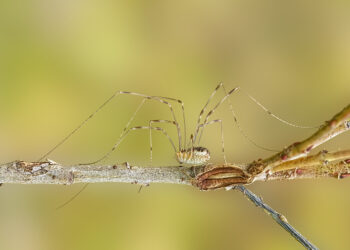Lacking a tongue, bamboo sharks (Chiloscyllium plagiosum) swallow with their shoulder bones. Other tongue-less sharks and fish species likely use a similar method of swallowing.

The finding comes from the lab of Ariel Camp, a postdoctoral researcher at Brown University’s Department of Ecology and Evolutionary Biology. Using state of the art X-ray imaging technology, Camp and her team filmed the internal going-ons of bamboo sharks having lunch. These tongueless critters, it seems, rely on their shoulder-blades to create suction when it’s time to swallow.
“They have this long pharynx, and they have to keep food moving down it,” Camp explains.
“We think this is part of a ‘hydrodynamic tongue.’ Sharks and fishes that don’t have a tongue control the motion of fluid within their mouths to manipulate food.”
Put your back into it!
Bamboo sharks’ “shoulder girdle” is made up of a U-shaped assortment of cartilage and muscles which they both for swallowing and control of their front fins, the paper explains. They’re one among several oceanic species that use a suction system to feed. It comes in handy when prying uncooperative pray, for example fish hidden in rocky crevices or dug into the ocean floor. By placing their mouth over the hiding spots, then rapidly opening it — sometimes with help from muscles deeper into their bodies — they create the suction needed to reel a meal in.
While the bamboo sharks’ suction system was documented in literature, whether or not their shoulder girdles played apart was a matter of some debate. The structure serves to support the sharks‘ frontal fins, which they use in a sort-of walking motion to position themselves over prey. As it’s not directly connected to the jaws or any other part of the head, however, it was assumed to remain still and play no part in the feeding process.
But through a method known as X-ray Reconstruction of Moving Morphology (XROMM), which combines skeletal CT scans with high-speed, high-fidelity X-ray “movies” observing tiny implanted markers, Camp’s team was able to create very detailed visualizations of how the sharks’ bones and muscles move while feeding. They fed three sharks pieces of squid and herring, then used XROMM imaging to get a better understanding of how they swallow.
They observed a surprising swing of the shoulder girdle in all three sharks: after closing their mouths, the cartilage quickly rotated backwards from the head by about 11 degrees. While the study only used bamboo sharks, Camp says other suction-feeding sharks probably swing their shoulders in a similar fashion.
Understanding how the sharks’ girdle functions could help explain why and how it evolved in the first place, for them and other species as well. Ultimately, as the structure enables such animals to “walk” around on the seabed, the research could uncover part of the story of how animals eventually made it from the ocean to dry land.
“The girdle shows up [in the fossil record], around the time that jaws evolved,” Camp said.
“We aren’t sure exactly what structures it evolved from or how that happened. Part of understanding that history is understanding what were the functions this structure had to carry out.”
The paper “Dual function of the pectoral girdle for feeding and locomotion in white-spotted bamboo sharks” has been published in the journal Proceedings of the Royal Society B.






